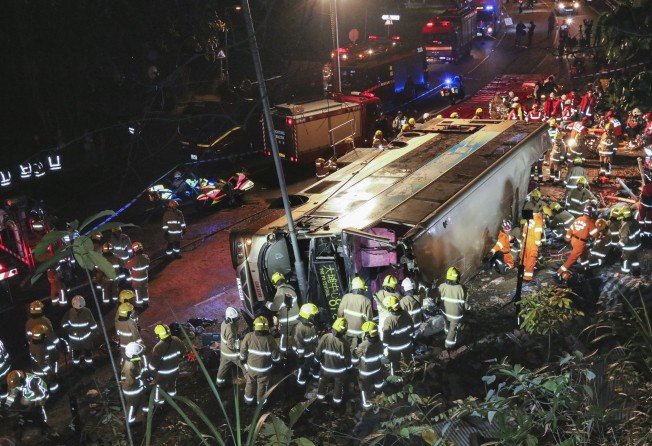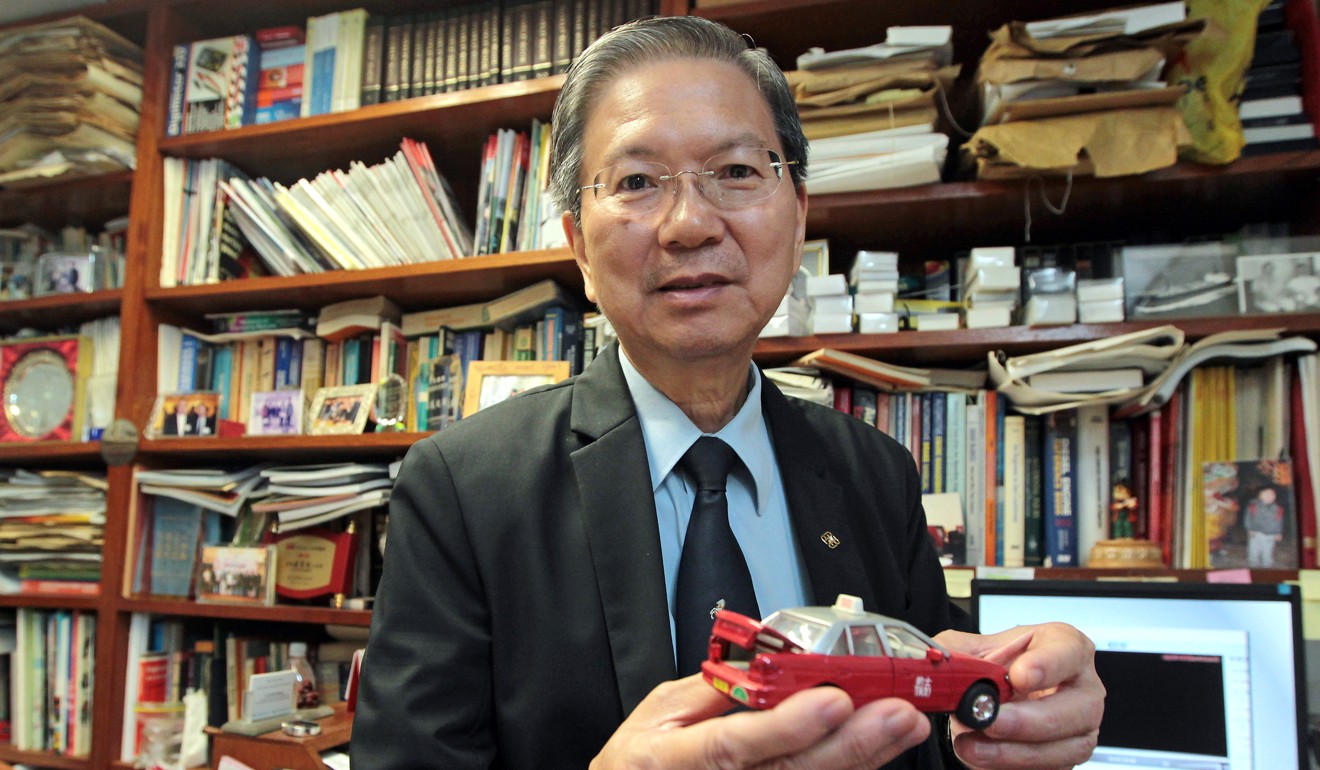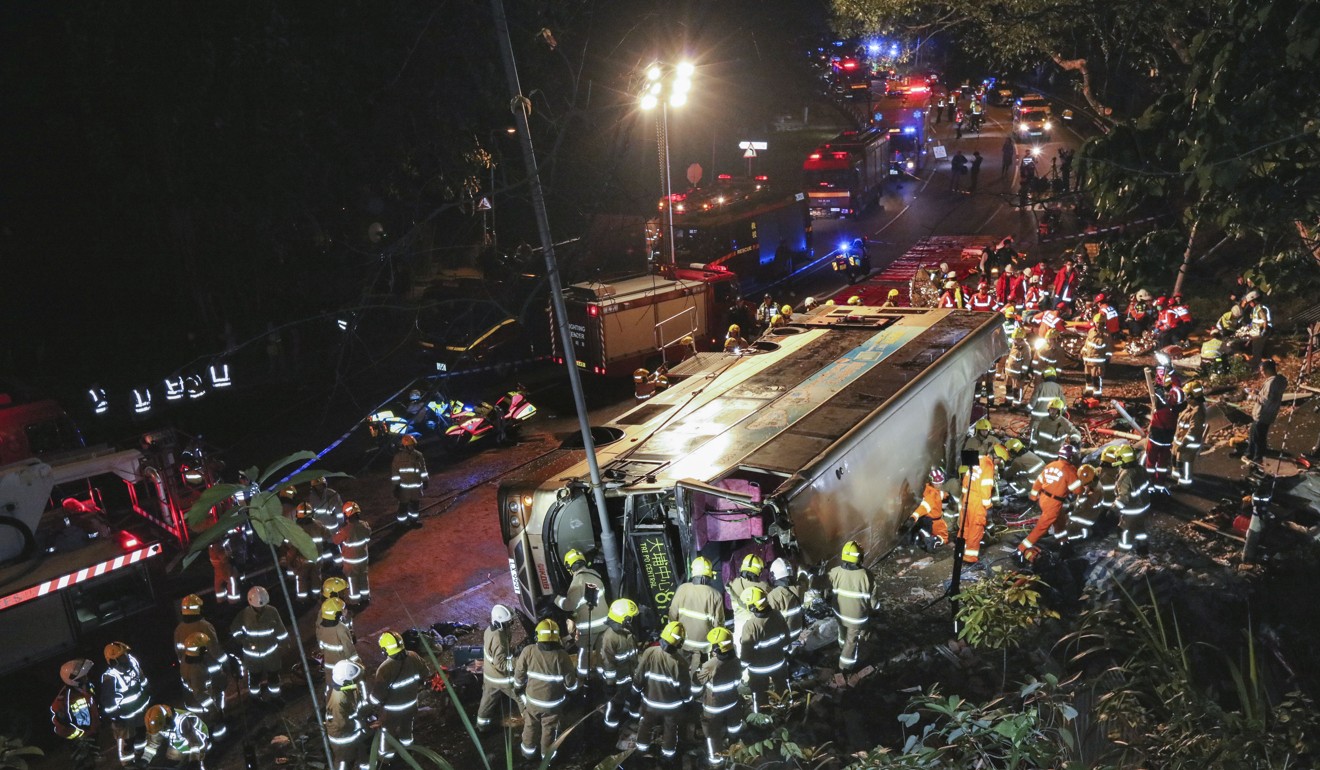As fatal Hong Kong bus crash raises transport safety questions, a survivor is ‘scarred for life’
‘I can’t even look at one, let alone get on board,’ he says after tragedy, as local expert offers advice

Every weekend for the past few years, Tsui Ma-shun tried his luck at the racecourse in Sha Tin. Living in Tai Po, he often rode the KMB route 872 bus.
But Tsui, 66, put a halt to his routine after his dramatic experience on the fatal crash of February 10, describing himself as “scarred for life” and vowing never to take any form of public transport again.
The double-decker bus Tsui boarded that evening flipped onto its side on Tai Po Road, killing 19 of his fellow passengers while injuring 66 others.
“I close my eyes every time I hear the sound of a bus,” he says. “I can’t even look at one, let alone get on board. I doubt I’ll ever take public transport ever again in my life. Not a single seat on any bus is safe.”
At the time of the accident, Tsui was sitting on the lower deck, near the exit.
“I held onto the handle bars in front of me when the bus skidded down the hill,” he recalls. “Being in that seat saved my life. Otherwise, I would have been thrown out the window.”
Tsui is not alone in being badly shaken. The tragedy raised questions about public transport safety, which many in the city appeared to have taken for granted.
Veteran mechanical engineer Lo Kok-keung says that while safety cannot be assured on every ride on public transport, a passenger can increase his or her chances of survival by making sound decisions about where to sit.
“In any accident, passengers sitting on the upper deck of a bus are more prone to injuries, especially if it flips on its side or over because of the force of gravity,” he explains.
“And of course for those who sit at the front of the bus, whether it’s the lower or upper deck, they are far more vulnerable in any head-on collision.”

An expert on automobile mechanics, Lo, 69, has given evidence in at least 80 court cases in Hong Kong over the last two decades.
Yet he points out that passengers who sit at the back are not guaranteed total safety either.
“In a rear-end crash, passengers at the back would most likely bear the brunt of the impact. It’s the same with broadside accidents. If you sit on either side of the vehicle, you would be hardest hit.”
In view of these risks, Lo says passengers can still find a relatively safe seat on public transport.
“It’s often the aisle seat located in the middle part of the compartment because you’re as far away from the sides as possible, with optimum protection in the event of an accident.”
Another theory should be taken into consideration when in other vehicles, such as minibuses, seven-seater private cars and taxis, he adds.
“The safest seats on any form of transport are the ones right behind the driver or those along the right side, on the same side of the vehicle as the driver. This is because in any dangerous situation it’s our survival instinct as well as reflexes to manoeuvre in a manner that helps us escape from danger and minimise damage.”

Lo concedes that finding a safe seat on any red or green minibus can be difficult, saying those drivers are often reckless.
“It’s not as simple as seating oneself behind the driver such as a taxi or a private car. There is no safest seat on minibuses because of the way most of them drive. But still there are a few locations that are slightly safer than others: the second and third rows.”
He emphasises one more safety measure that passengers should always observe: wear a seat belt at all times on all transport.